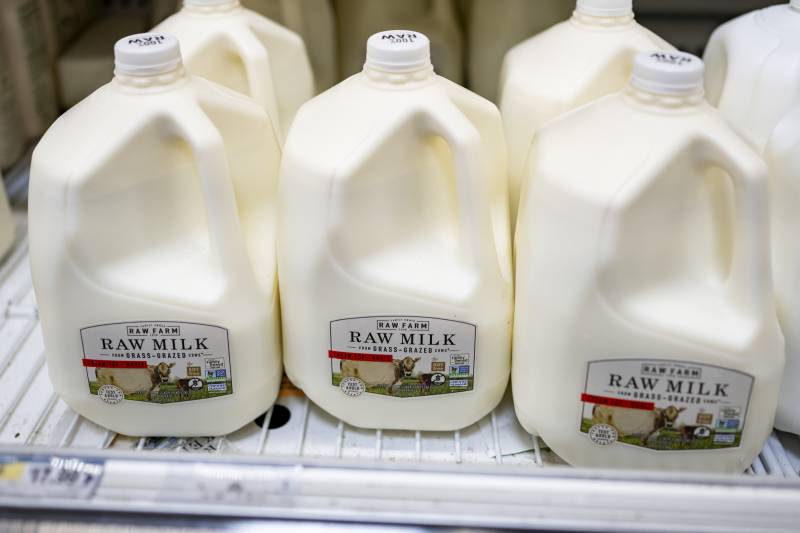Last month, the FDA reported that 1 in 5 pasteurized milk products nationwide tested positive for the H5N1 virus. Pasteurized milk appears to still be safe to consume because the process makes the virus inactive. Nevertheless, experts believe that the significant viral load might suggest that the virus is spreading at a higher rate than previously known.
Industry groups and producers of raw milk have pushed back, calling the warnings against raw milk related to avian flu “fear-mongering.” Mark McAfee, the CEO and founder of Raw Farm, a dairy farm in Fresno and one of the largest raw milk producers in the country, said the sale of his company’s product “has never been higher.”
“Farmers have figured out how to produce raw milk at a very low risk,” he said. He argues there are ways to produce raw milk that are clean and safe to drink. This includes sourcing milk from a single farm and ensuring that the milking equipment is clean.
Bonni Gilley, a Fresno resident, has been drinking raw milk for more than 20 years and said it hasn’t made her sick. The recent warning left her undeterred. “Raw means raw, like out of the lady, out of the cow,” she said. “To me, it’s more wholesome. I always look for products that are as close to being directly off the vine as possible.”
But Chin-Hong thinks continuing raw milk consumption, given the rapidly evolving nature of the virus, is “like playing Russian roulette.”
“The risk of infection isn’t the same for everyone,” Chin-Hong said.
When it comes to potential infection, he is most concerned about elderly people, young children, immunocompromised and pregnant individuals. “It’s often more challenging to treat these individuals just because their immune system isn’t quite as developed or robust. And the ability of drugs to work depends on some help from the immune system,” he said.
Health officials have been stockpiling vaccines and adjuvants and are ready to manufacture more if needed. Doctors can currently choose from four antiviral options and administer them to those suspected of H5N1 infections.
There is currently no requirement to test raw milk for H5N1. The FDA and USDA said they are working on testing retail milk and dairy samples for H5N1.
Those who choose to continue to drink raw milk should be extra cautious, Chin-Hong said. He recommends that people look out for any symptoms, such as headache, muscle aches, difficulty breathing, diarrhea, or vomiting, and contact their healthcare provider. “Because the earlier someone can get ahead of it, the better,” he said.
Slowing the spread of bird flu
Jaydee Hanson, policy director at the Center for Food Safety, a nonprofit that advocates for food and agricultural issues, said too much attention has been given to drinking or not drinking milk. The bigger issue is containing the potential spread of the virus.
For weeks, the USDA has required H5N1 PCR or genetic testing for all dairy cattle before they are moved between states. But Hanson thinks that rule is not strict enough.
“The USDA and the FDA need to be banning any shipment of animals from farms that are known to have the bird flu to other operations, whether in the state or out of state,” he said. “We don’t want this virus to mutate and act in mammals the way it does in poultry. The FDA and the USDA need to get their act together.”
Avian flu can be transmitted from birds to other animals through direct contact, such as with saliva, mucus, and feces of infected animals, or through another animal, like pigs.
Pigs are known to be susceptible to both avian and human influenza viruses. They theoretically could act as an intermediate host, or a go-between, of the new kind of infection, passing on a hybrid mutation of the virus to a person.
If this hybrid virus survives in humans, it can be easily transmitted to other humans. Something similar happened in 2009 with another avian influenza virus, H1N1, which killed over 200,000 people worldwide.
While the risk to the general public remains low, UC Davis’s Abdelfattah said people who work on farms and have regular contact with infected animals should be extra cautious because they are at higher risk of infection. “We need to care about the safety of these workers because these people are on the front line,” he said.

